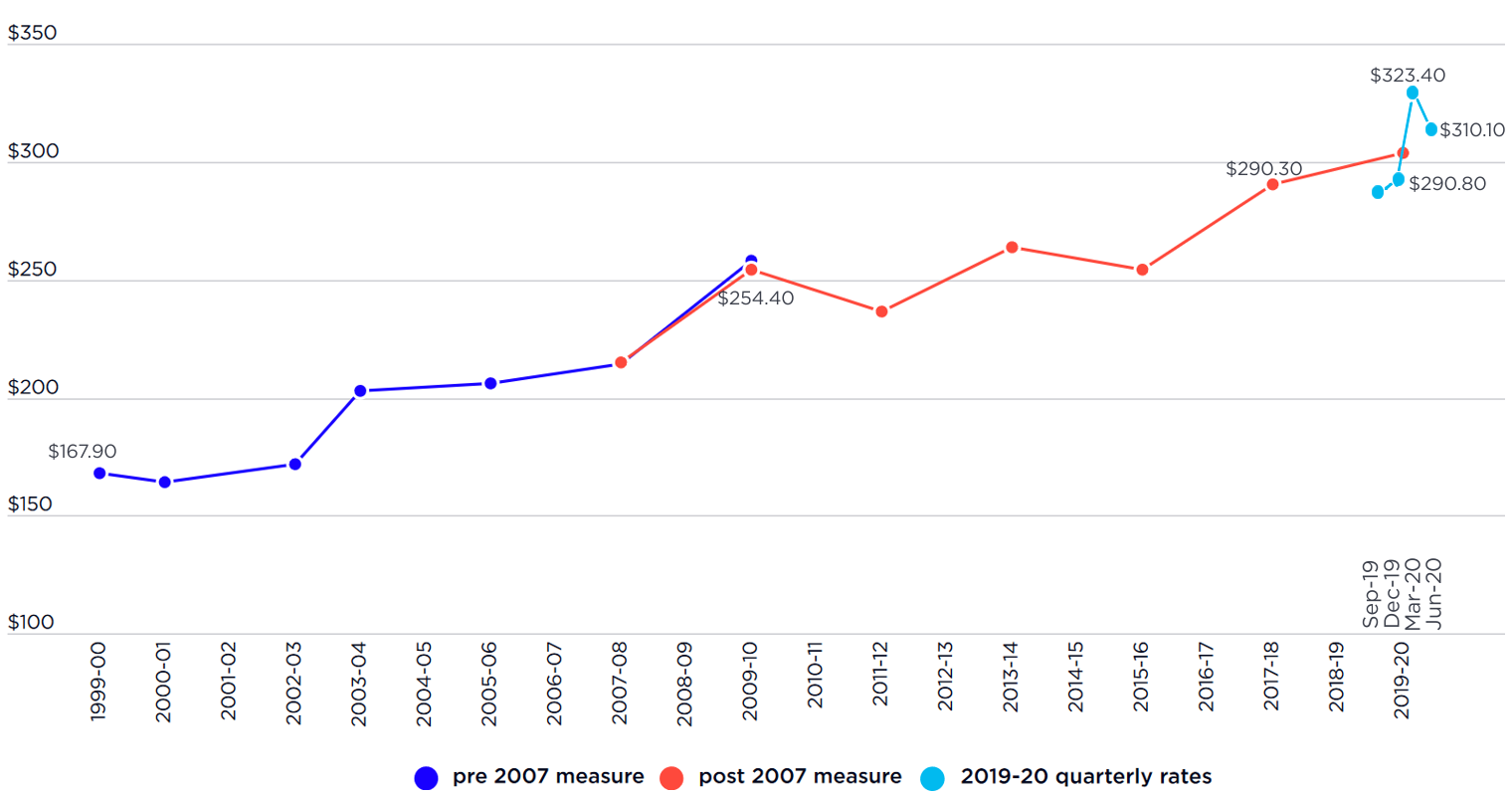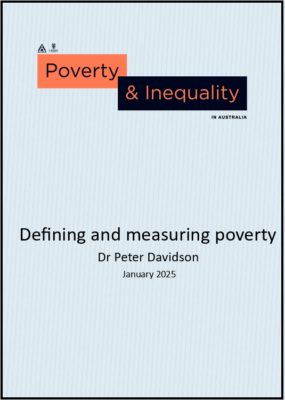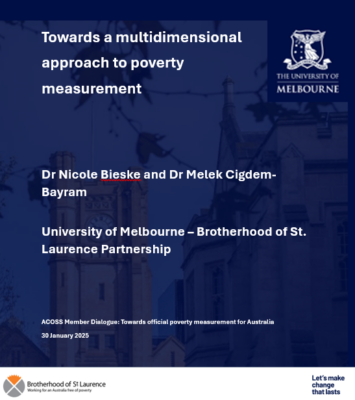This graph shows the average poverty gap for all households in poverty from 1999 to 2019. It is in 2019 dollars, and using the 50% median income after-housing costs poverty line.

The higher (red) line shows poverty gaps measured using the pre-2007 ABS income definition, while the lower (dark blue) line is based on the post 2007 income definition. The light blue line shows the quarterly changes in the poverty gap during the 2019-20 period.
The average poverty gap increased steadily from $168 per week in 1999 to $254 per week in 2009 (in constant 2019 values), then rose to $290 per week in 2017. Over that period the poverty gap followed a different pattern to the poverty rates during the same period, reflecting a combination of factors working against each other:
* Changes in the composition of people below the poverty line after 2009 reduced the poverty gap before 2009 and increased it afterwards. These influences were partly offset by increases in housing costs throughout this period.
* Before 2009, a substantial proportion of people below the poverty line relied on the Age Pension, which was just below poverty line. A pension increase in 2009 lifted many older people above the poverty line.
* This meant that a growing proportion of people in poverty were on much lower payments such as Newstart Allowance (whose value declined in comparison with median household incomes as discussed previously), increasing the poverty gap.
The right side of the figure (light blue line) shows the changes in the poverty gap over the four quarters of 2019-20. The poverty gap rose from $291 per week in September 2019 to $323 in March 2020, then fell to $310 in June 2020., mirroring the rise and fall of the poverty rates during the same period.

